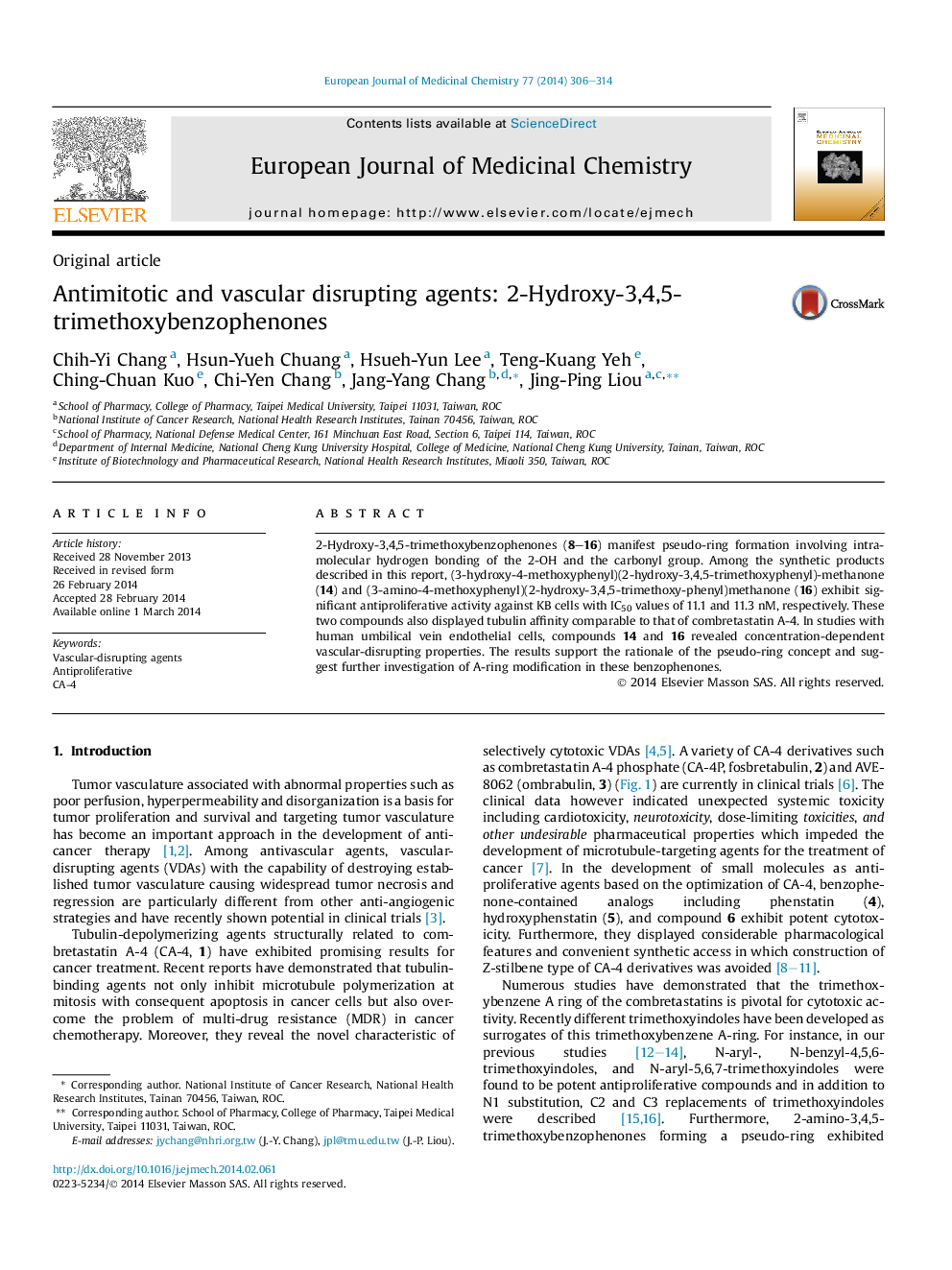| Article ID | Journal | Published Year | Pages | File Type |
|---|---|---|---|---|
| 1398956 | European Journal of Medicinal Chemistry | 2014 | 9 Pages |
•A series of 2-hydroxy-3,4,5-trimethoxybenzophenones were designed and synthesized.•The pseudo-ring formed by intramolecular H-bond is workable for A-ring surrogate.•Two compounds (14 and 16) with potent antiproliferative activity were identified.•Compounds 14 and 16 were potent to destroy tumor vasculature.
2-Hydroxy-3,4,5-trimethoxybenzophenones (8–16) manifest pseudo-ring formation involving intramolecular hydrogen bonding of the 2-OH and the carbonyl group. Among the synthetic products described in this report, (3-hydroxy-4-methoxyphenyl)(2-hydroxy-3,4,5-trimethoxyphenyl)-methanone (14) and (3-amino-4-methoxyphenyl)(2-hydroxy-3,4,5-trimethoxy-phenyl)methanone (16) exhibit significant antiproliferative activity against KB cells with IC50 values of 11.1 and 11.3 nM, respectively. These two compounds also displayed tubulin affinity comparable to that of combretastatin A-4. In studies with human umbilical vein endothelial cells, compounds 14 and 16 revealed concentration-dependent vascular-disrupting properties. The results support the rationale of the pseudo-ring concept and suggest further investigation of A-ring modification in these benzophenones.
Graphical abstractThe pseudo-ring approach widens the exploration of A-ring modification and provided 14 and 16 as potent antiproliferative agents with vascular-disrupting activity. Figure optionsDownload full-size imageDownload as PowerPoint slide
